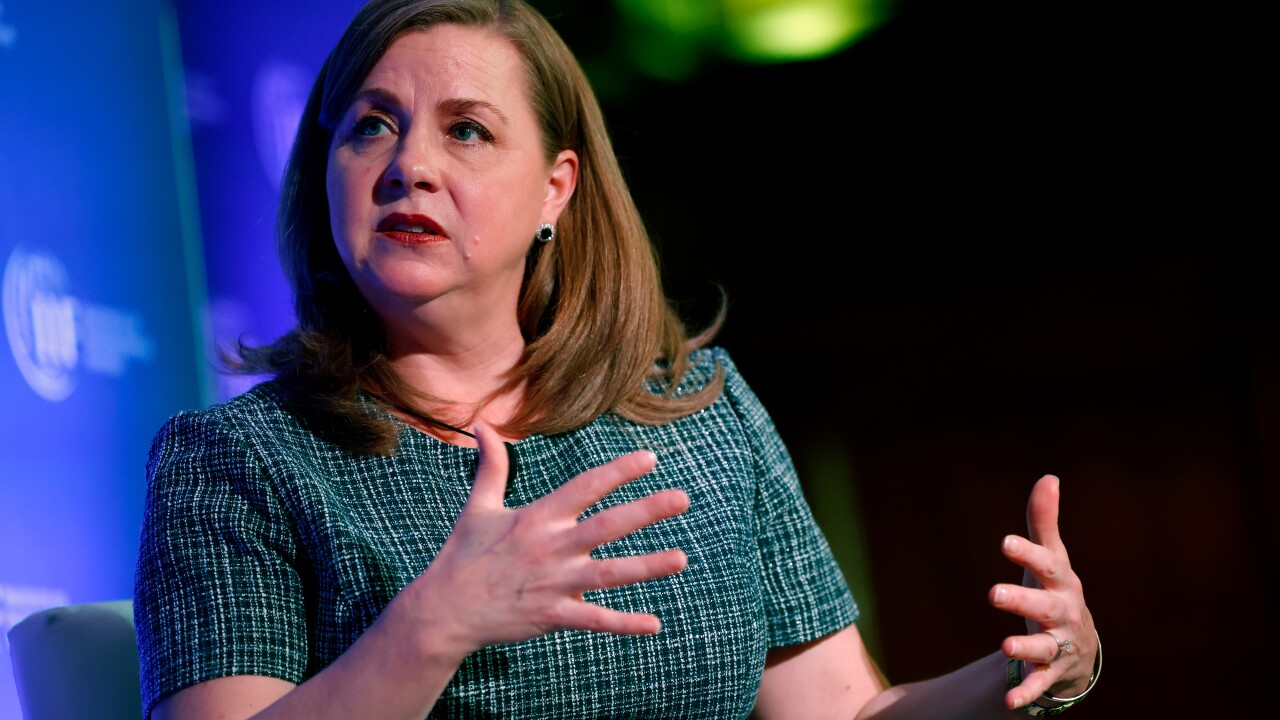Failures tend to outnumber success stories when banks and merchants have tried cooperating on a single, interoperable mobile wallet, but Denmark may be pulling it off.
A consortium of 62 Danish banks called Bokis last year launched a digital wallet enabling Android handset owners to link a locally issued Mastercard or Visa card to the wallet for contactless payments. In March, the wallet added support for iPhones. And now the merchant piece is beginning.
A beta version of the Bokis mobile payments app that's accepted at local retailers launched for iPhone in late April, with Android support coming later, according to Nets, the Denmark-based payments firm developing the app.

The Bokis digital wallet is founded on the ubiquity of Dankort, Denmark’s domestic payments scheme, which already had broad local merchant support for contactless payment via cards, with merchants involved at every step of development over the last year, according to Nets.
When the Bokis wallet's app rolls out broadly this summer, it will have succeeded where several other collaborative wallets — including the U.S.'s Softcard and CurrentC, the U.K.’s Weve, Canada’s suretap and Singapore’s SmartWallet — failed.
War stories of the challenges of herding banks and merchants together for a common mobile wallet abound, centering on the challenges of balancing the conflicting business goals of merchants, banks and smartphone manufacturers. But some other collaborative mobile wallets with government support in development now in India and other emerging nations show promise, observers say.
So how did a group of banks and merchants in Denmark succeed where so many other mobile wallets came up short?
Experts say one factor is Denmark’s compact size; it has a population of 5 million, and about twice that number of payments cards in circulation. The U.S., by comparison, has nearly
The fact that Dankort has broad debit card acceptance in the market was key, according to Jeppe Juul-Andersen, senior vice president at Nets and a director of the Dankort mobile wallet.
But the breakthrough in getting banks and merchants to cooperate on an interoperable app was finding the middle ground on costs, so that neither banks nor merchants felt they were being asked to pay too much for the convenience of gaining a broadly accepted app,
“Merchants asked for an open infrastructure that could support multiple wallets, not letting the issuer decide on a case-by-case basis," Juul-Andersen said. "Then we created a governance structure that set pricing so that participating merchants must pay a subscription to cover some costs, but it’s a reasonable level. Both sides — banks and merchants — showed some willingness to yield when we worked out the costs.”
To bring merchants into the fold with the Dankort mobile wallet in a way that could support all types of handsets, Nets devised a solution leveraging Bluetooth technology embedded in each participating merchant’s terminal to enable contactless payments, even with iOS handsets whose near-field communication antenna is off-limits to developers, according to Juul-Andersen.
“Because Apple doesn’t allow access to the NFC chip in its handsets, we’re using Bluetooth Low Energy technology as a method to connect the terminal to the phone, which results in the exact same experience as any other NFC handset payment,” he said.
Nets created a custom specification that includes secure tokenization of transaction data over Bluetooth, but each terminal requires a manual upgrade to support the Dankort mobile wallet. The terminal upgrades are “simple and not expensive,” Juul-Andersen said.
Participating merchants are moving quickly to upgrade, according to Juul-Andersen. Retail chains including Netto, Føtex and Bilka are participating in the beta test with others expected to join, with more than 10,000 payment terminals in Denmark eligible to participate, according to Nets.
Bokis has taken a strategic approach to each stage of the mobile wallet rollout. The Android version of the mobile wallet launched first, but iPhone users will be the first to use the beta version of the merchant-focused app.
“In Denmark, about 60% to 65% of the population has a smartphone using Apple’s iOS operating system,” Juul-Andersen said.
However, not all of Denmark's banks are participating in the venture so far. Bokis comprises small and midsize banks; large banks tend to offer their own proprietary wallet apps.
Nets also is working to keep expectations in perspective.
“We're not expecting the beta version of the Dankort app to trigger rapid migration from contactless card payments to mobile payments,” Juul-Andersen said, noting that younger consumers so far show the most interest in using smartphones for everyday payments.
To continue the spirit of cooperation and innovation around development of the Dankort app, Nets also late last month announced a new development forum, the Dankort Idea Lab, where users may share ideas, comments and suggestions.
“We recognize that development of the Dankort mobile app will be a continuous process, with the objective of offering the most attractive in-store payment solution,” Juul-Andersen said.




